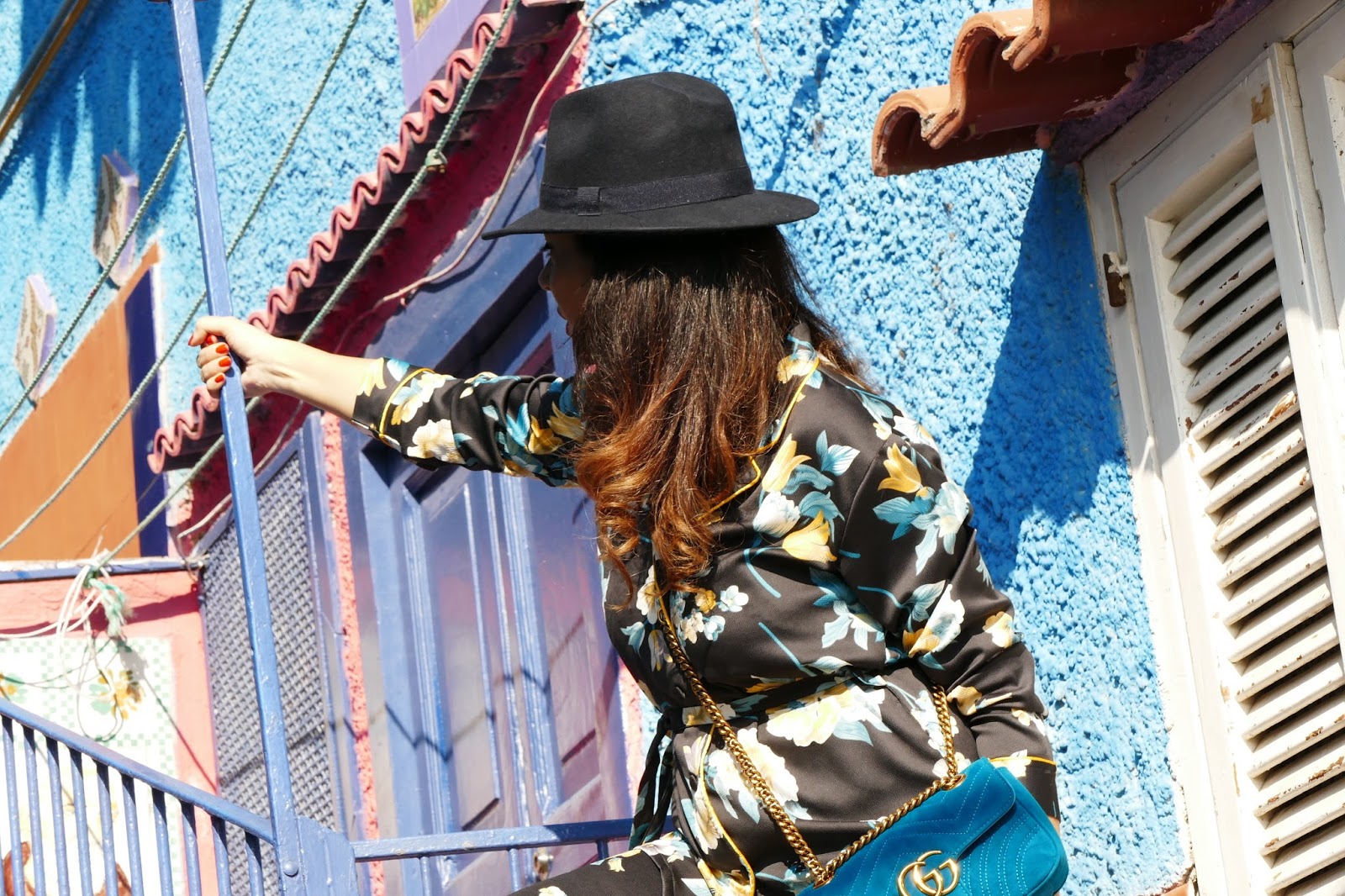
Dichiarata Patrimonio dell’Umanità dall’Unesco, Vietri sul Mare è uno del 15 comuni della splendida Costiera Amalfitana, il suo portale di accesso.
Da sempre considerata patria indiscussa della ceramica, famosa in tutto il mondo, basta varcarne i confini per rendersene conto: Il Duomo di San Giovanni Battista, risalente al X secolo, posto all’ingresso della cittadina che dà il benvenuto con la sua inconfondibile cupola maiolicata, e poi, una volta raggiunto il coloratissimo centro storico, ben conservato, con le sue tradizioni e i suoi profumi di antichi sapori del luogo, tutto vi parlerà di ceramica.
Dalle strette stradine adornate con pezzi unici variopinti, le pareti piastrellate delle abitazioni che si fondono incredibilmente bene con lo scenario naturale e che prendono quel sapore caratteristico e suggestivo che salta fuori da ogni fotografia e da ogni cartolina, con quegli inconfondibili colori armonici che li compongono, un artigianato frutto di una tradizione secolare e della passione vietrese che si percepiscono ad ogni angolo.
Passeggiare tra i vicoli di questo antico borgo di marinai è una sorpresa continua, mentre indosso l’eleganza e l’allure “rilassata” di un pigiama look, perchè come dettano le ultime tendenze moda, la lingerie è definitivamente sdoganata come daywear.
Passeggiare tra i vicoli di questo antico borgo di marinai è una sorpresa continua, mentre indosso l’eleganza e l’allure “rilassata” di un pigiama look, perchè come dettano le ultime tendenze moda, la lingerie è definitivamente sdoganata come daywear.
(Clicca qui, qui e qui per saperne di più sul trend).
(Clicca qui e qui per vedere tutti i miei post da Vietri e dalla Costiera Amalfitana).
All the colors of the Amalfi Coast, the sea’s deep blue, the striking green forests and the golden orange of the citrus groves seem to meet up in Vietri, particularly in the glazes and decorations of this gorgeous Campanian town’s beautiful ceramics, produced since 1600.
Named as UNESCO World Heritage in 1997, along with the rest of the Amalfi Coast, this community not far from Salerno was struck on a splendid site amidst hills and sea.
Already inhabited in Antiquity, when it was the city of Marcina, Vietri, in addition to its enchanting coastline, is surrounded by magnificent Mediterranean vegetation.
Named as UNESCO World Heritage in 1997, along with the rest of the Amalfi Coast, this community not far from Salerno was struck on a splendid site amidst hills and sea.
Already inhabited in Antiquity, when it was the city of Marcina, Vietri, in addition to its enchanting coastline, is surrounded by magnificent Mediterranean vegetation.
Vietri has been famous for its majolica for centuries, and these splendid materials even cover the altars, cupola and the cusp of the Parish Church of St. John the Baptist, dating to 1732; this magnificent religious structure boasts colors visible from far away, as well as canvases from the 17th-18th Centuries.
Walking Vietri’s lanes and corridors is a series of continuous surprises, and it becomes the routine to see many a building decorated in the local tile.
Walking Vietri’s lanes and corridors is a series of continuous surprises, and it becomes the routine to see many a building decorated in the local tile.
Of course, here in Vietri the colors of the ceramics’ varnishes and shellacs blend amazingly well with the natural scenery, as can be seen in the tiled walls, both exterior and interior of the houses, or inlaid in the roads and alleyways of this old borgo.
(Click here and here to read more about the easy look that’s a big trend this season).
(Click here and here to see all my articles from Vietri and the Amalfi Coast).
Location: Vietri Sul Mare – Amalfi Coast – Italy
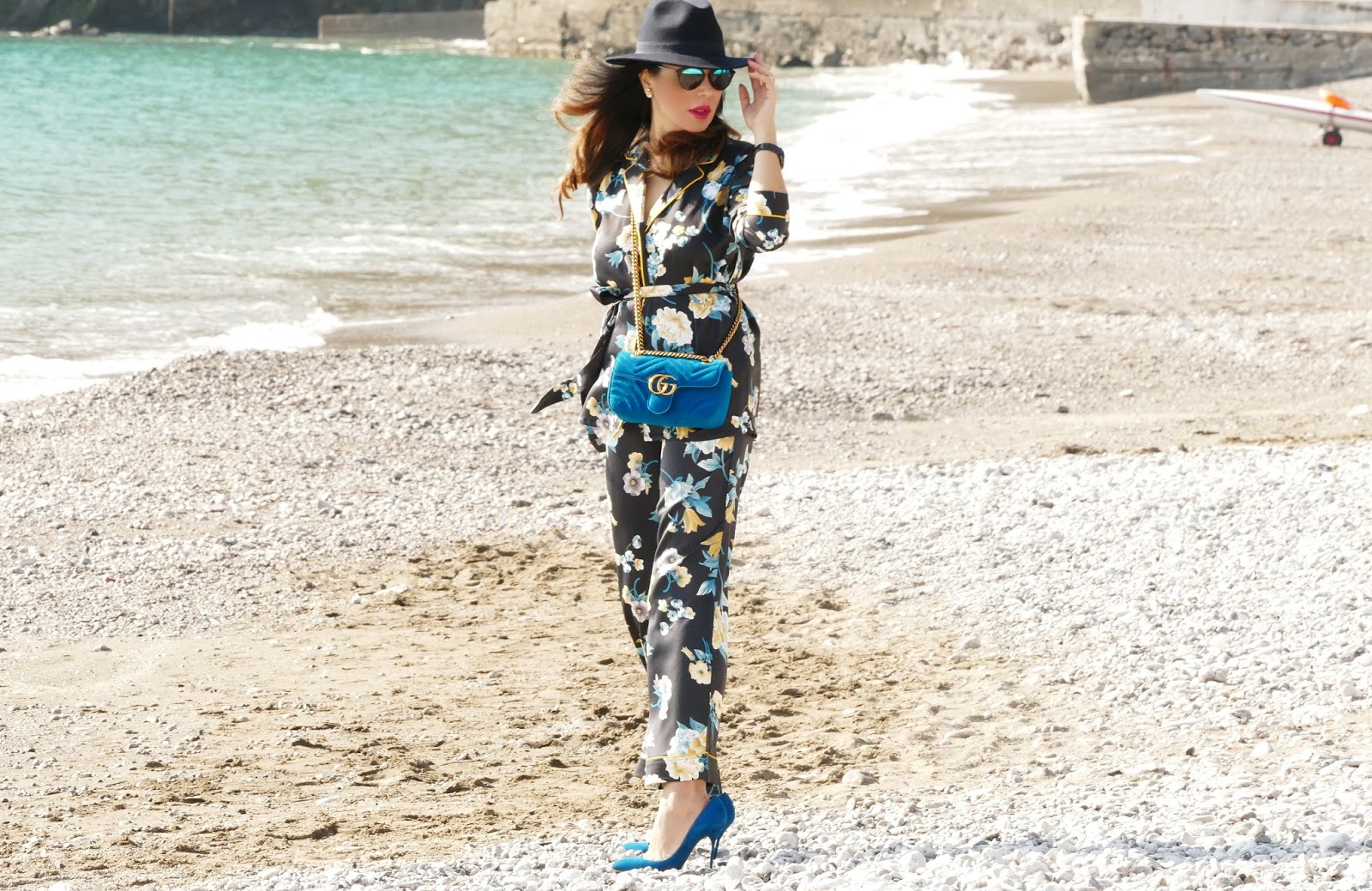
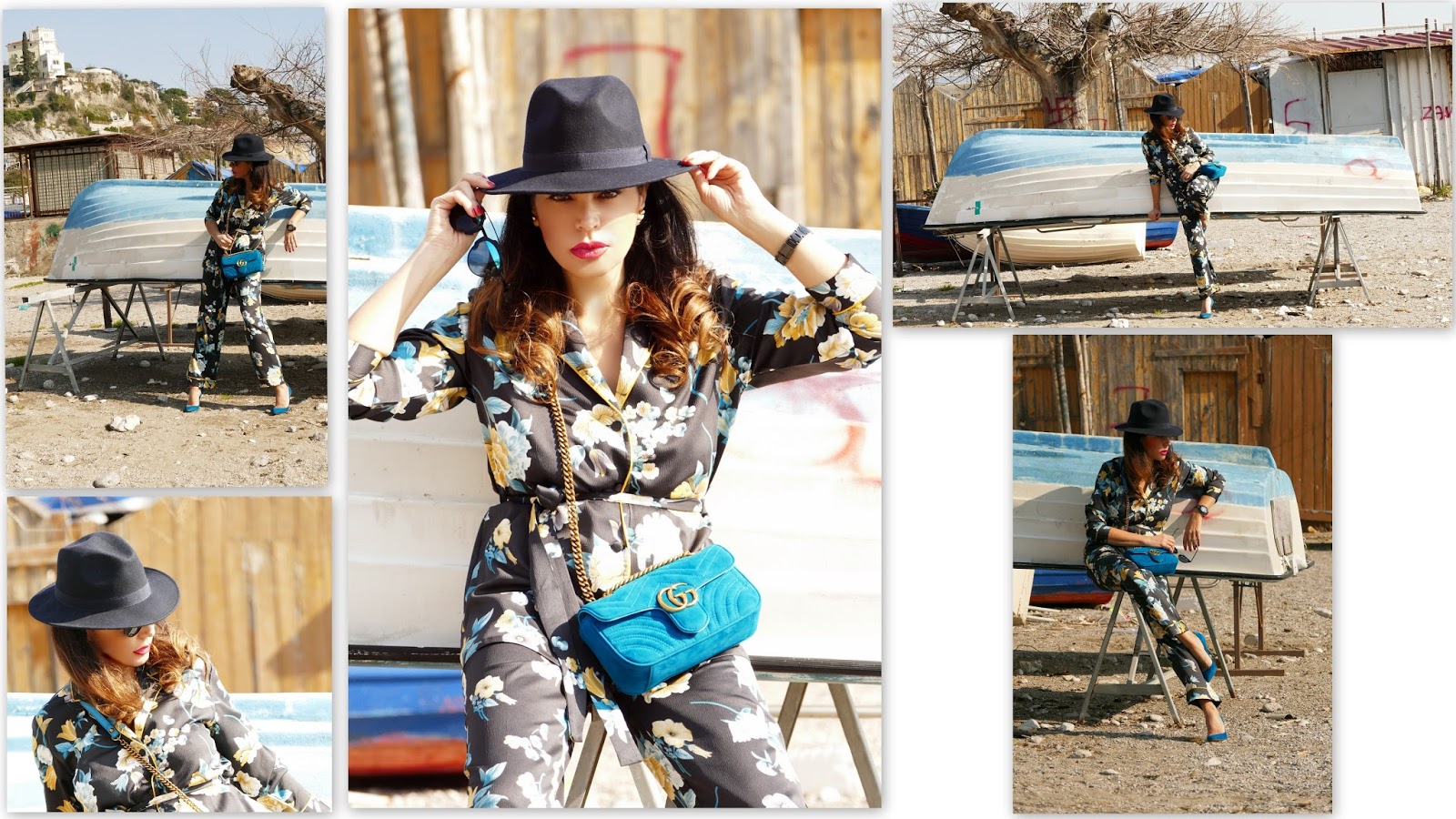
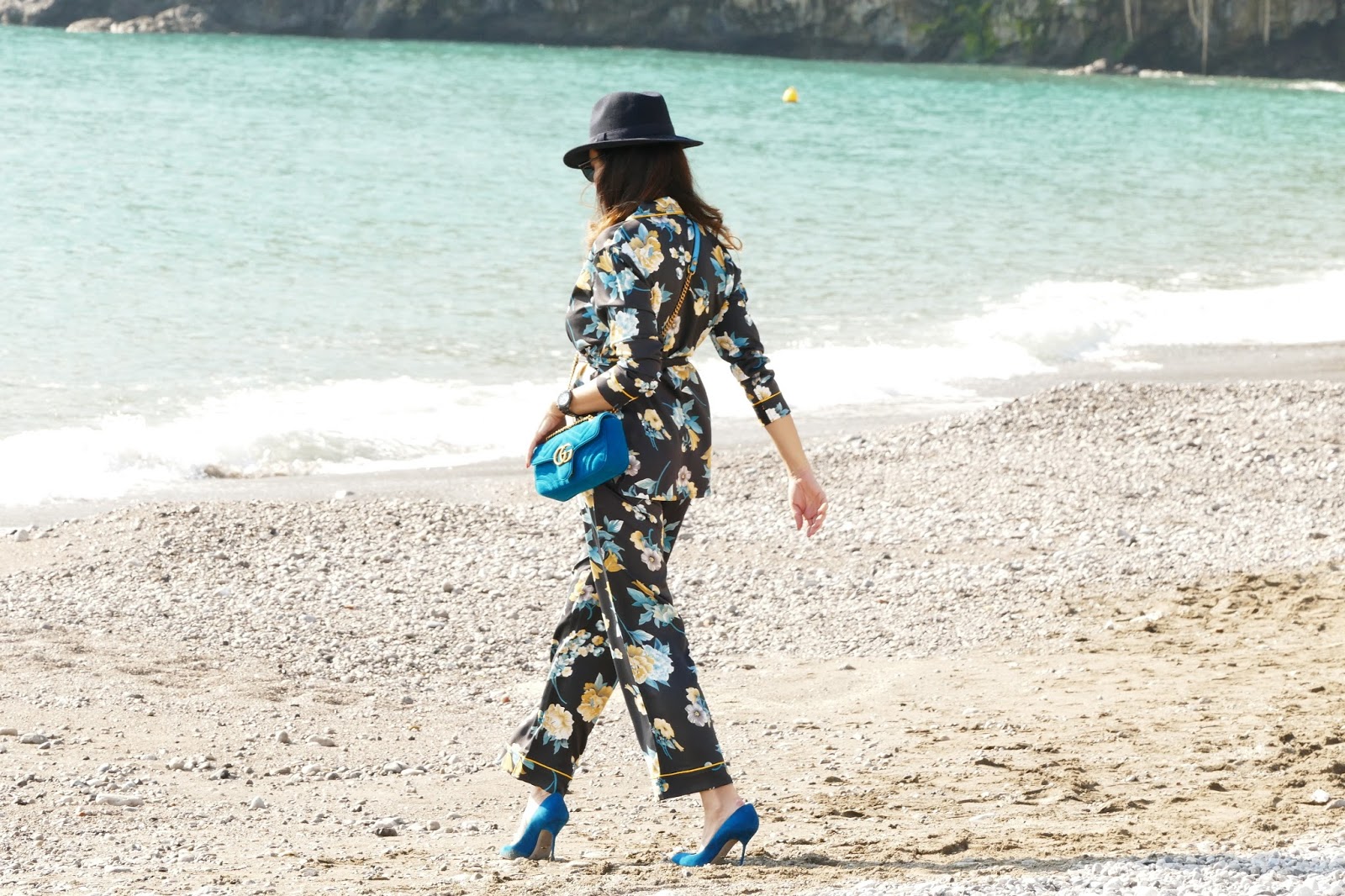
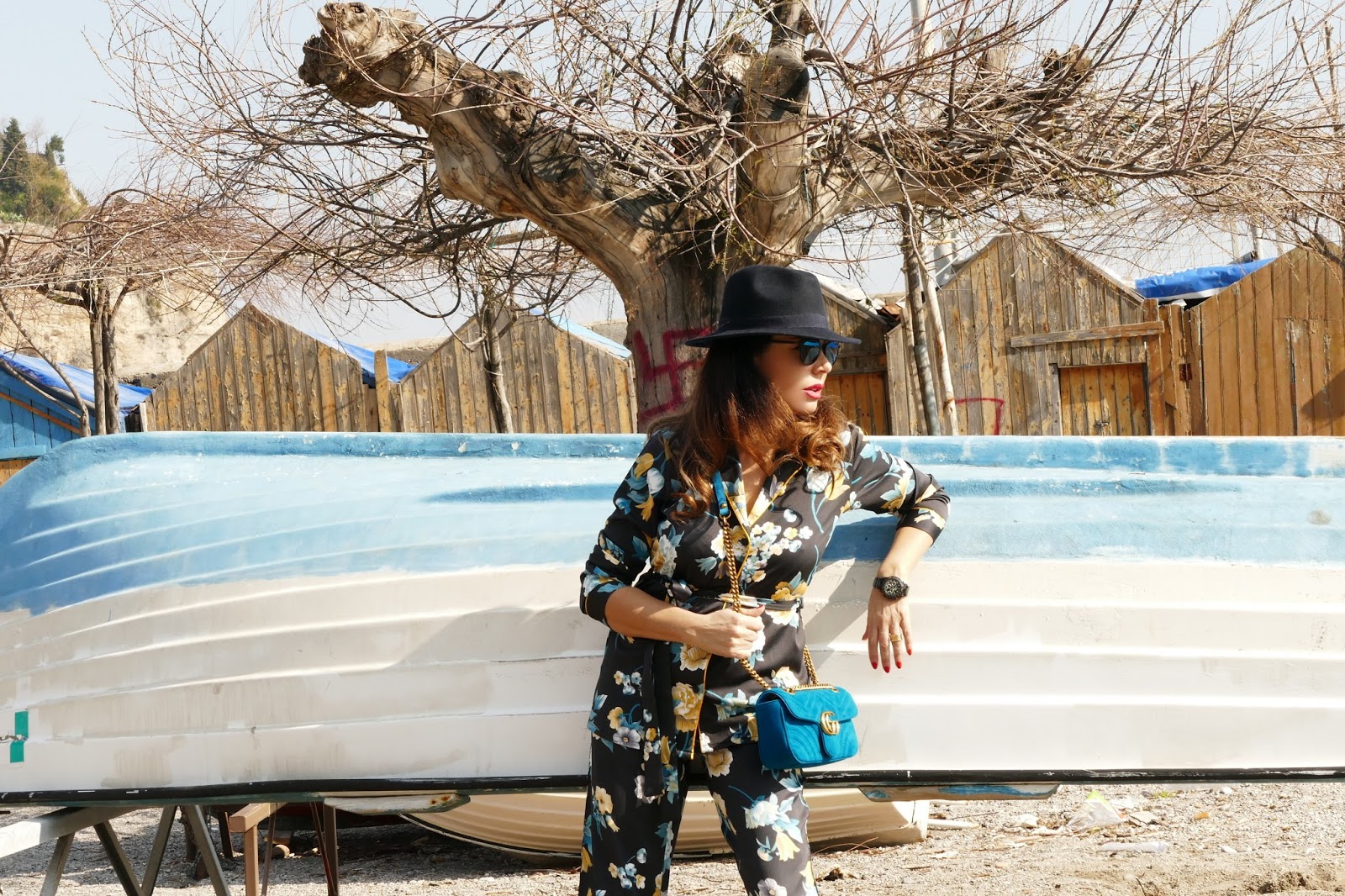
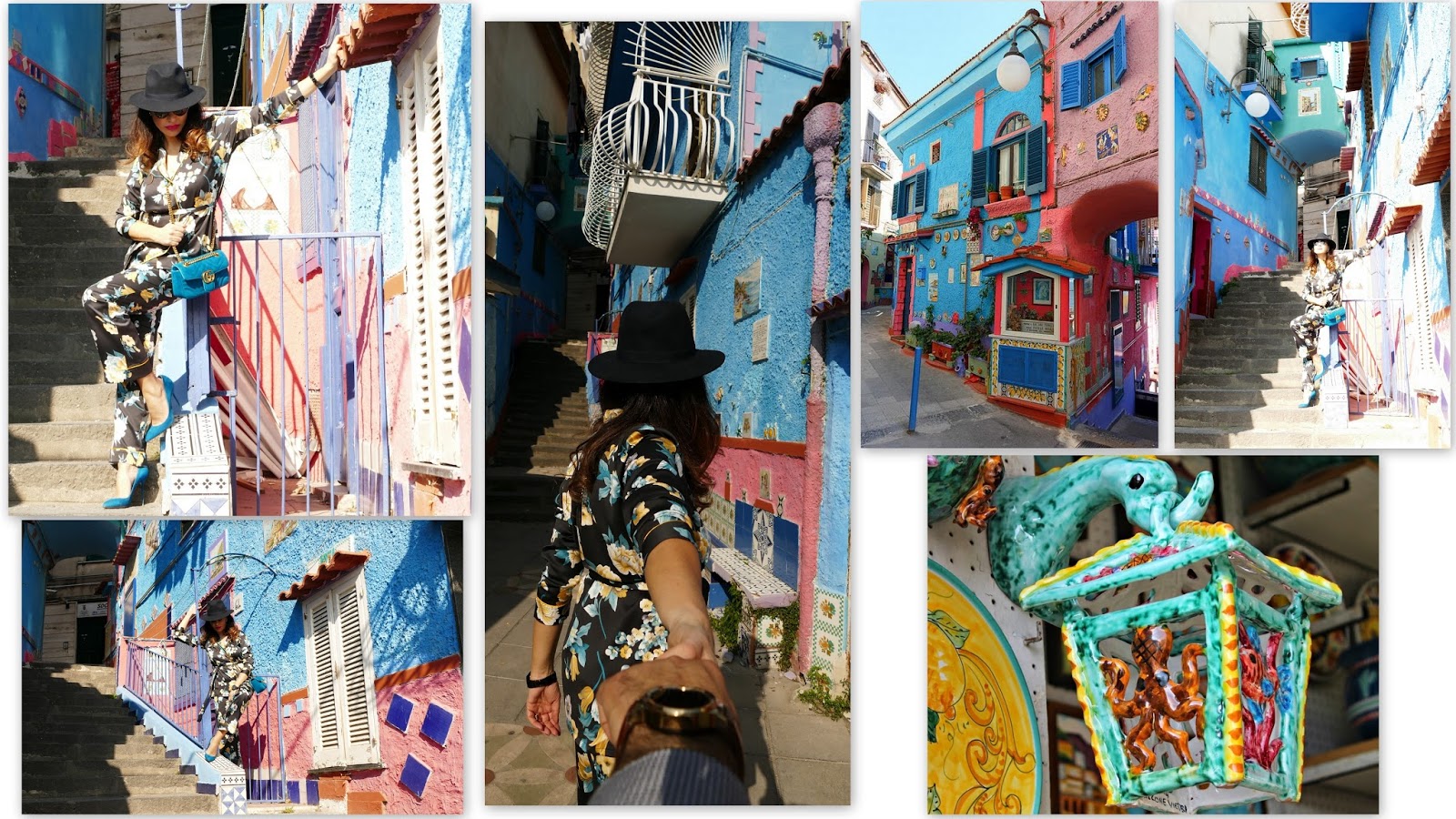
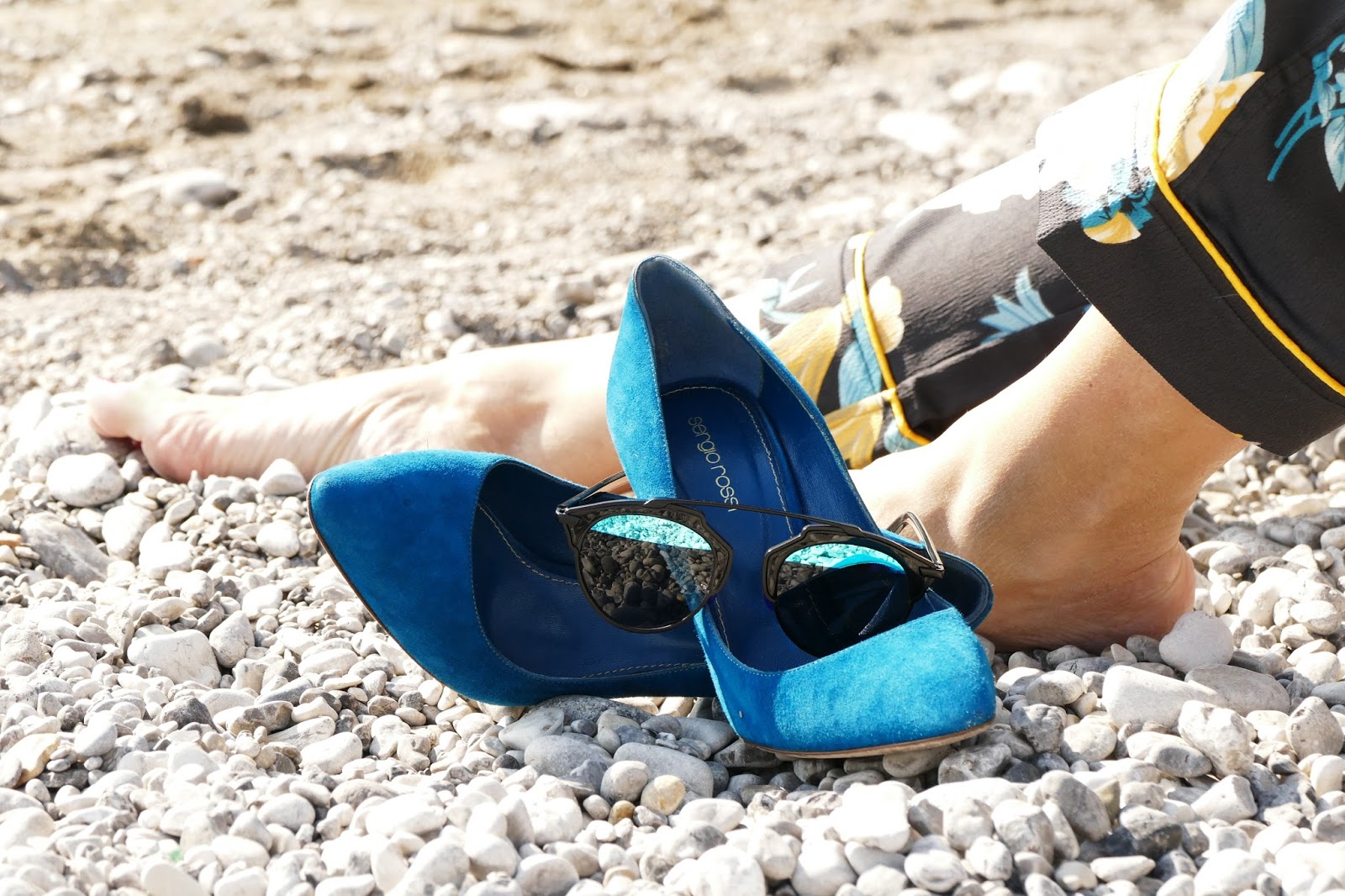
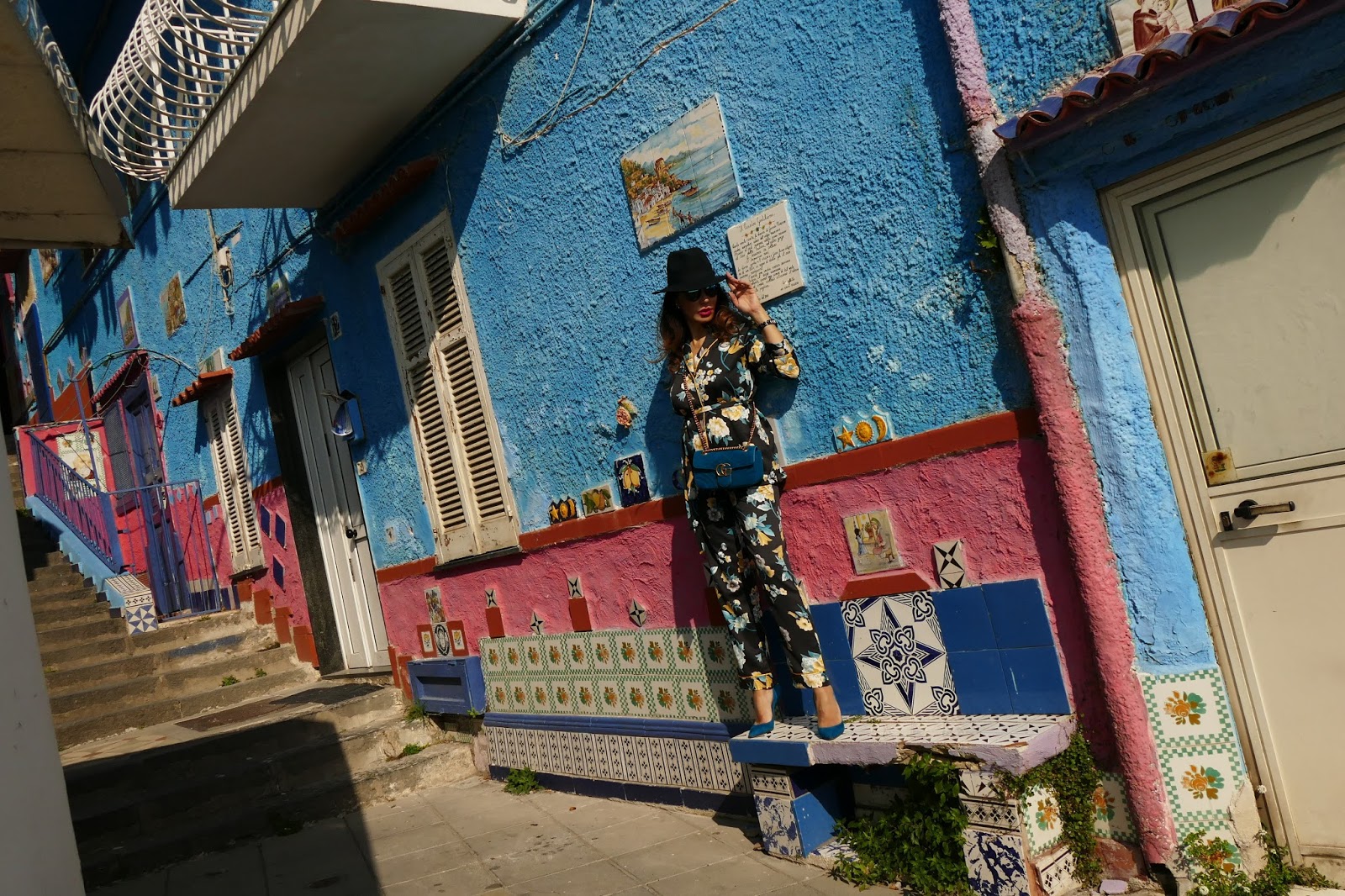
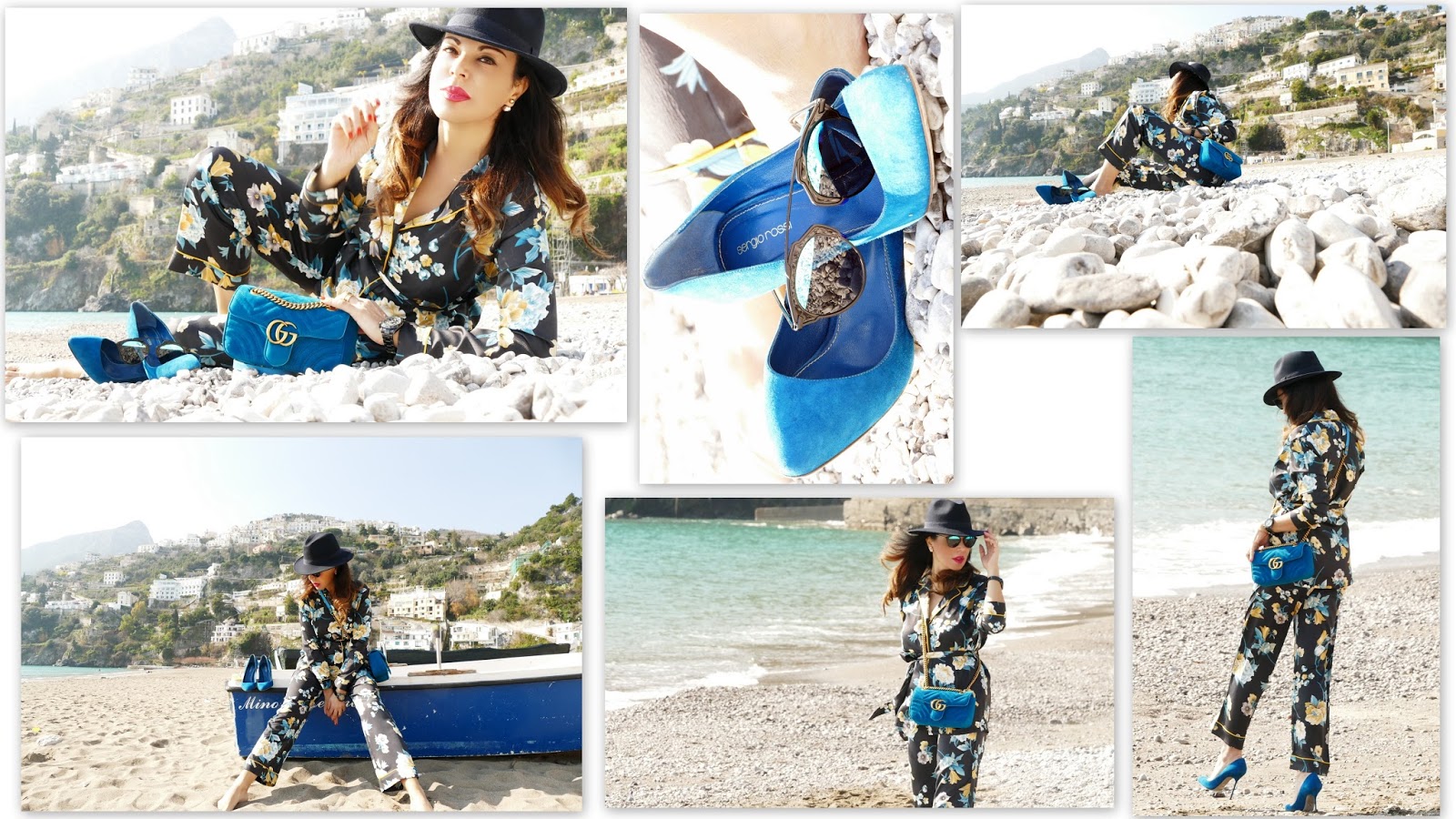
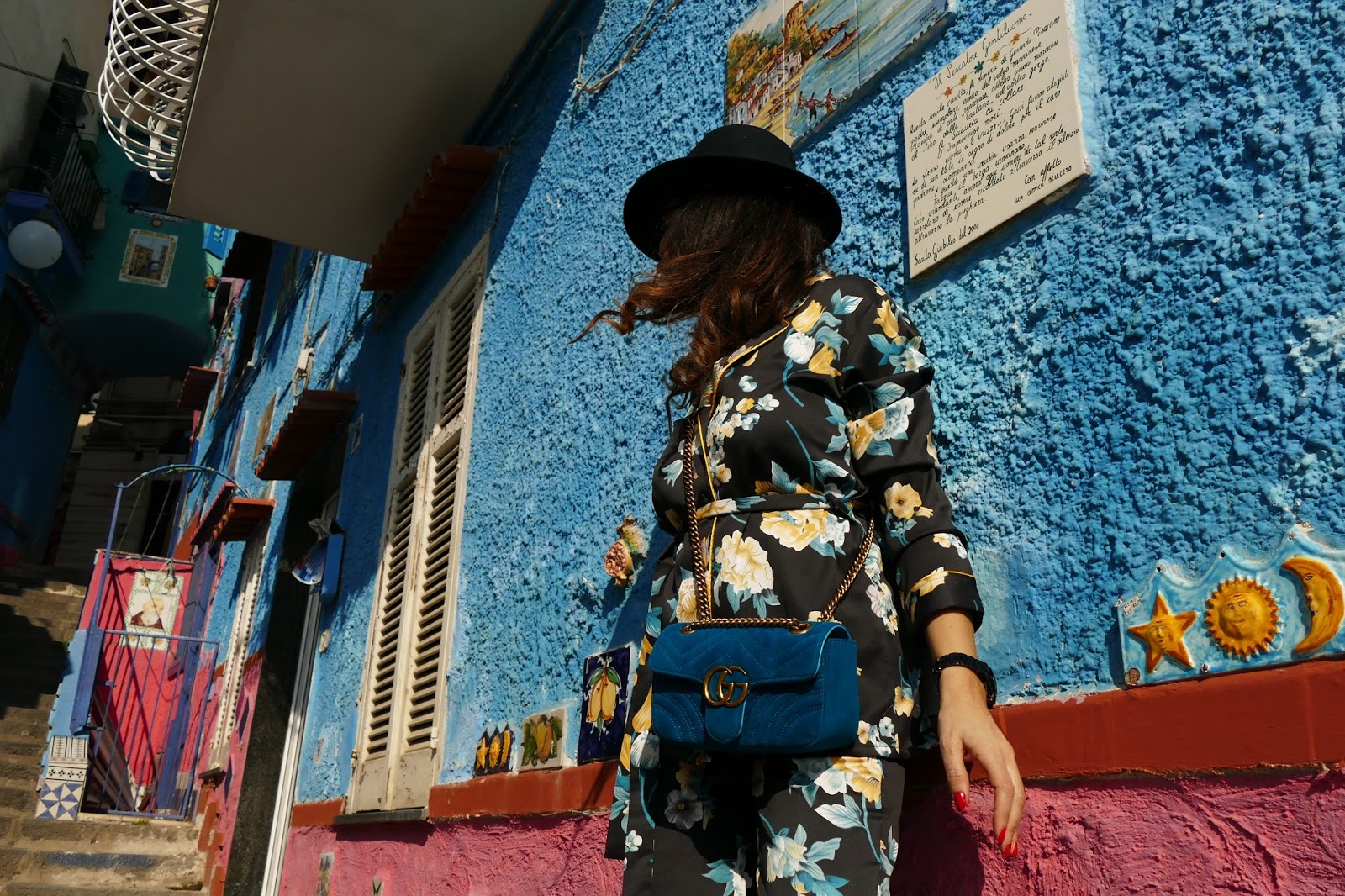
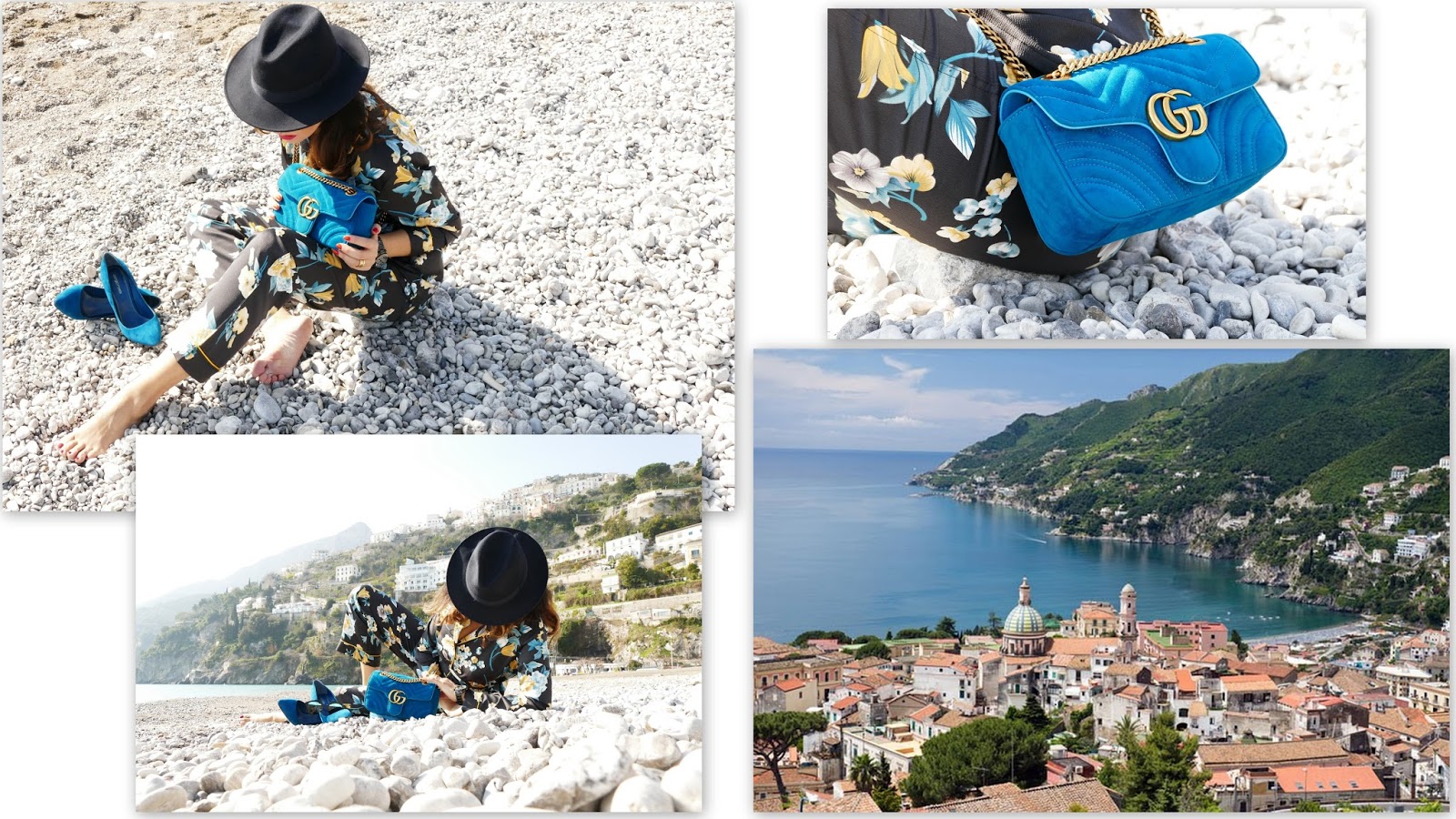
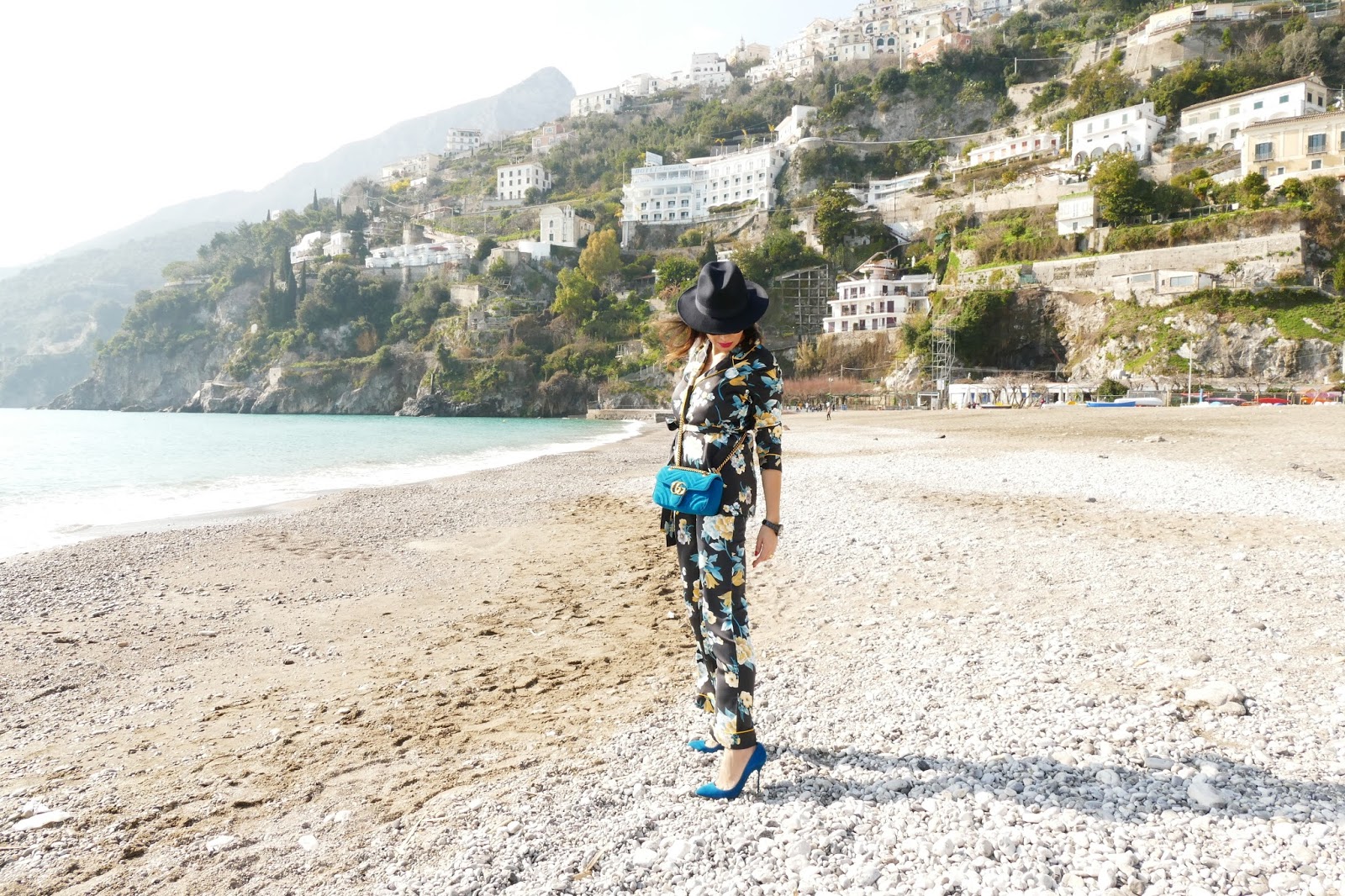 Photos: GerardoFusco.it
Photos: GerardoFusco.it
I was wearing:
Asos pyjamas suit
Christian Dior “So Real” sunnies
Gucci “Marmont” bag
Sergio Rossi “Madame” pumps



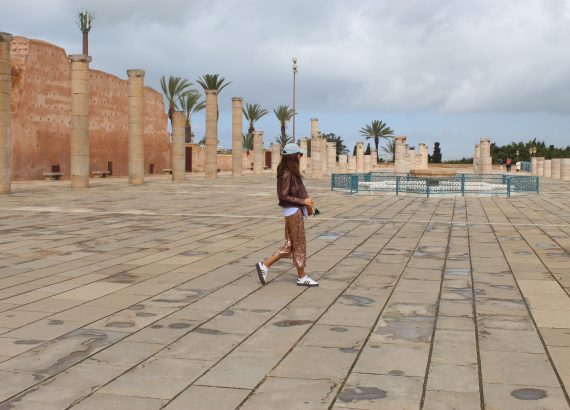
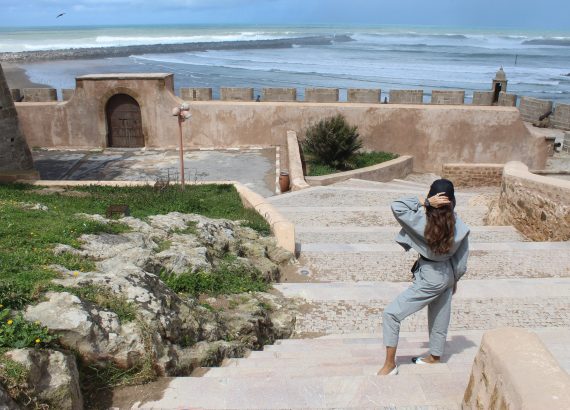
I absolutely love this pyjamas suit!
THE PINK ELEPHANT SHOE // INSTAGRAM
Great outfit, love also the location (:
CM | XIII.
Ideal look el bolso y zapatos son ideales!!
Besos guapa!
Ideal look el bolso y zapatos son ideales!!
Besos guapa!
Wow! You look so pretty!!!
That outfit is so effortlessly chic Paola!
Love your floral suit and the blue accessories!
Everything is so on point and really gorgeous! ❤❤❤
Have a great one Paola!
http://www.fashionradi.com
I love your suit ♡
Wow Paola!! <3 Love this post! The jumpsuit, the bag, the sunnies and the heels!! Everything is so pretty! You looks amazing!
xx
Shivangi
http://www.outoncatwalk.com
Elegante e perfetto questo look.
Amo il colore delle pumps. Kiss
Ti aspetto sul mio blog http://www.littlefairyfashion.com
Mai visitato questo splendido borgo presentato alla grande con il tuo pyjama di gran stile
Un bacio
Mai visitato questo splendido borgo presentato alla grande con il tuo pyjama di gran stile
Un bacio
Great post dear! 🙂
New post on my blog: http://vesnamar.blogspot.rs/2017/05/more-coupons-huge-discounts-from-zaful.html
Love the ensemble..Lovely pictures!!
Nistha
https://www.fashionistha.com/infatuation-with-crop-top/
Che splendore……..
Un abbraccio!
Marta
http://www.lagattarosablog.it
Thanks a lot 😀
love the exotic vibes my dear 😀 nice combo!
NEW FASHION POST | TREND ALERT: Exotic Allure. Are You READY?
Instagram ∫ Facebook Official Page ∫ Miguel Gouveia / Blog Pieces Of Me 😀
I'm loving this jumpsuit as well as the pictures. <3
xoxo,
SHAIRA
http://www.missdream-girl.blogspot.com
Sono esattamente 15 anni che non vado a vietri, bellissima! E adoro la jumpsuit!
http://www.dontcallmefashionblogger.com
adoro Vietri: i colori, il mare, il cibo…tutto! il tuo pajama è top..come sempre del resto!
bacio Gina
new post
F-Lover Fashion Blog by Gina Beltrami
Che posto magnifico, Vietri… Splendido servizio fotografico, Paola, deliziosa la jumpsuit e bellissimi gli accessori 🙂
xoxo
ww.bellezzefelici.blogspot.com
Adoro Vietri e questo Pyjama suit ti dona tantissimo, sei meravigliosamente bella =) Baci
New post
Love the blue shoes and bag ! Stunning photos as always.
http://www.pink-purpledots.blogspot.com
What a beautiful place, great pictures!
Have a lovely day 🙂
Rosanna x
Rose's Rooftop
Thanks for stopping by Rosanna, have a lovely Monday!
It's so gorgeous there and your photos are lovely! Have a great day! Gemma x
http://www.jacquardflower.uk
Che incanto Paola, vorrei essere lì ora! Sei stupenda, adoro il tuo pigiama look, di grandissima eleganza e raffinatezza. Un bacio grande!:*
You rock this suit doll love it very stunning.
Sempre chic , scatti stupendi!
bacioni
Chiara – http://www.shesinfashionblog.com
THIS SUIT IS STUNNING ! great colors! xx
Coco and Jeans by Marisa x My Instagram x My Bloglovin
You look gorgeous!
http://paulan-official-blog.blogspot.com/
Love it Paola!!
gorgeous!!
Emma
http://www.emmalovesfashion.com
essendo io un incapace con le foto, quando vedo le tue rimango a bocca aperta e poi mi piacciono molto i colori del tuo pyjamas.
LaLu
essendo io un incapace con le foto, quando vedo le tue rimango a bocca aperta e poi mi piacciono molto i colori del tuo pyjamas.
LaLu
essendo io un incapace con le foto, quando vedo le tue rimango a bocca aperta e poi mi piacciono molto i colori del tuo pyjamas.
LaLu
Un altro dei tuoi look strepitosi, il colore di borsa e scarpe è fantastico e il completo ha una fantasia pazzesca!
Un bacione! 💕 F.
La Civetta Stilosa
wow, you make this pajama piece absolutely stunning. Love it and the picture location.
Bernie, xx
The Style Fanatic
This is so nice!!!
BEAUTYEDITER.COM
Gosh, you look fabulousin the floral outfit, dear! xoxo
This suit and prints are so beautiful, perfect match with this blue bag!
http://violettedaily.com
Tu lo porti d'incanto , ne ho scattato uno anche io l'altra settimana . non è facile ma ripeto a te riesce sempre da dio .
buona giornata cherie
http://unconventionalsecrets.blogspot.it
This is like one of my favourite outfits ever babe! 🙂 xx
http://www.fashionjazz.co.za
Your outfit is gorgeous. So daring to go to the beach though 😏
https://anaturellecraving.blogspot.my/2017/05/taking-stock.html
Dear Paola, so in love with your fantastic floral suit! Kisses from Bavaria/Germany, Rena
http://www.dressedwithsoul.com
me encanta! cada día más!!!! feliz día! un besazo! te espero en mi blog
http://www.ShoesAndBasics.com
Che meraviglia questo completo!
Un bacione,
Mariateresa Scotti
Fashion secrets of a pretty girl
FACEBOOK – INSTAGRAM – TWITTER – LOOKBOOK
Love the outfit, very chic. You look beautiful 🙂
Recently Posted: Lakme enrich lip crayon review
Bellissima Vietri, voglio andare al mare!!!!! Molto bello il tuo look.
You look stunning in this pijamas suit! Have a beautiful day!
http://www.misperlasdemoda.com/2017/05/15/festive-vibes/
Thanks a lot Agne, have a lovely new week!
xoxo
Che esplosione di colori oggi! Meravigliosa tu e la location ^_^
Buona settimana a tutto sprint ^_^
Ciao Paola! Non passavo da un pò, ma vedo che le cose non sono affatto cambiate: sei sempre bellissima!!!